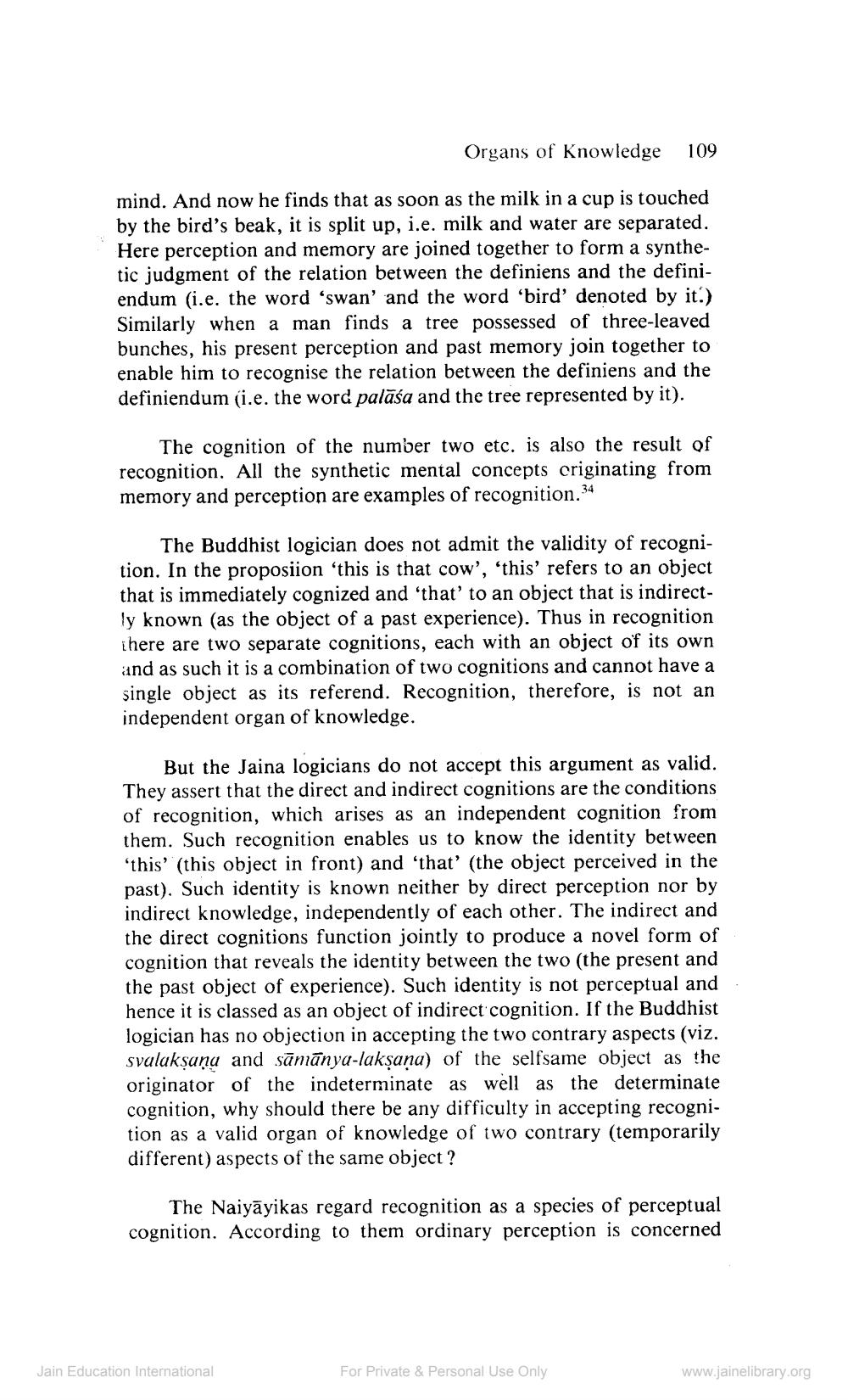________________
Organs of Knowledge
109
mind. And now he finds that as soon as the milk in a cup is touched by the bird's beak, it is split up, i.e. milk and water are separated. Here perception and memory are joined together to form a synthetic judgment of the relation between the definiens and the definiendum (i.e. the word “swan' and the word “bird' denoted by it.) Similarly when a man finds a tree possessed of three-leaved bunches, his present perception and past memory join together to enable him to recognise the relation between the definiens and the definiendum (i.e. the word palāśa and the tree represented by it).
The cognition of the number two etc. is also the result of recognition. All the synthetic mental concepts criginating from memory and perception are examples of recognition.34
The Buddhist logician does not admit the validity of recognition. In the proposiion 'this is that cow', 'this' refers to an object that is immediately cognized and 'that' to an object that is indirectly known (as the object of a past experience). Thus in recognition There are two separate cognitions, each with an object of its own and as such it is a combination of two cognitions and cannot have a single object as its referend. Recognition, therefore, is not an independent organ of knowledge.
But the Jaina logicians do not accept this argument as valid. They assert that the direct and indirect cognitions are the conditions of recognition, which arises as an independent cognition from them. Such recognition enables us to know the identity between 'this' (this object in front) and 'that' (the object perceived in the past). Such identity is known neither by direct perception nor by indirect knowledge, independently of each other. The indirect and the direct cognitions function jointly to produce a novel form of cognition that reveals the identity between the two (the present and the past object of experience). Such identity is not perceptual and hence it is classed as an object of indirect cognition. If the Buddhist logician has no objection in accepting the two contrary aspects (viz. svalakṣaņu and sāmānya-lakṣaṇa) of the selfsame object as the originator of the indeterminate as well as the determinate cognition, why should there be any difficulty in accepting recognition as a valid organ of knowledge of two contrary (temporarily different) aspects of the same object?
The Naiyāyikas regard recognition as a species of perceptual cognition. According to them ordinary perception is concerned
Jain Education International
For Private & Personal Use Only
www.jainelibrary.org




